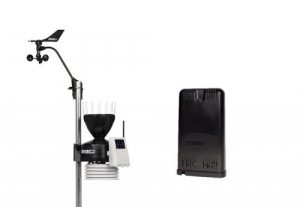Before purchasing a weather station for your home, it’s important to know what to look for. Here’s a quick guide to the instruments you should look for. And don’t forget to check the price! Then, read on for the top three reasons you should purchase a weather station. Once you know what you need, you can find the perfect one for your home. We hope these tips will help you get started. And, of course, enjoy using your new instrument! For more information, visit https://www.instrumentchoice.com.au now.
Buying guide for a home weather station
 If you’re interested in keeping up with the weather, a personal weather station can help you do just that. While some great weather apps are available, you may want to have a reliable home weather station that provides real-time data on your local area. The data it provides is reliable and easy to understand. Purchasing a home weather station can help you monitor the weather conditions at home, and it’s an excellent investment in keeping you in touch with nature.
If you’re interested in keeping up with the weather, a personal weather station can help you do just that. While some great weather apps are available, you may want to have a reliable home weather station that provides real-time data on your local area. The data it provides is reliable and easy to understand. Purchasing a home weather station can help you monitor the weather conditions at home, and it’s an excellent investment in keeping you in touch with nature.
You can find a variety of weather stations at various price points. The most affordable ones can be found in the midrange range, but don’t forget to consider the future and expansion. For example, if you plan to add more sensors, look for a weather station that can grow with you. You’ll also want to make sure that the weather station you buy has a master unit that can accommodate more sensors and a second outdoor unit.
You can also find weather stations with more advanced features. Some models offer more than just measurements. Some come with optional accessories and are great for long-term planning. Some even come with a built-in GPS. Check out customer reviews to see what others say about a particular brand. You might even save a few bucks if you buy a basic kit. And remember to check out customer feedback before you make your final decision.
Instruments in a weather station
A weather station usually contains four instruments: a microcomputer weather data acquisition instrument, meteorological sensors, and a power source, such as a solar panel. These instruments measure various aspects of atmospheric conditions and provide information for weather forecasts. Different weather instruments measure different parameters, including wind speed and direction, precipitation, temperature, solar radiation, and wind chill. Other instruments include tipping bucket rain gauges and solar radiation sensors. For more information, visit https://www.instrumentchoice.com.au now.
Another important instrument in a weather station is the thermometer, which measures air temperature. The thermometer consists of two parts: the sensor, made of mercury, and the scale, which converts the measured temperature to a numerical value. This instrument operates by measuring the amount of moisture in the air and recording the temperature accordingly. The sensors are usually mounted inside a sensor housing, which allows the meteorologist to see both the humidity and the temperature of the air.
Besides measuring the temperature, another instrument in a weather station is the anemometer, which measures wind speed. The anemometer can be made of either a cupped or sonic technology. In addition to the sensor, a wind vane measures the direction of the wind. Barometers are vital tools in weather forecasting. When the pressure changes downward, stormier weather is forecast. Conversely, rising pressure precedes better weather conditions.
Cost of a home weather station
A home weather station gives you a wealth of information about the local weather, including barometric pressure, wind speed and direction, humidity, rainfall, and temperature. You can also receive alerts about inbound storms. These tools can also help you predict the weather in advance, avoiding relying on delayed weather information. Costs vary depending on features and model, and you may want to consider several factors before deciding.
The cost of a home weather station can range from $50 to $500. You should consider the size of your house when choosing a weather station, as larger homes will require larger models. It is also advisable to consider the device’s location, as the battery may not always be easily replaced. However, a battery-operated weather station is more convenient, especially with limited space. If you plan on using it frequently, opt for a battery backup.
A home weather station can be beneficial for many applications. For instance, farmers may want to monitor the rainfall average of the last season. Knowing current rainfall levels will allow them to determine how much water they need. Sports enthusiasts may want to know whether or not lightning-producing storms are approaching, so they can keep spectators safe. Emergency responders may also need to monitor weather conditions in real time. And the list of benefits of a home weather station is virtually endless. For more information, visit https://www.instrumentchoice.com.au now.